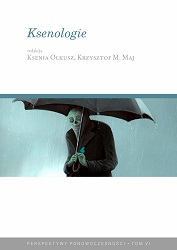Simmelowski model Obcego w dystopijnym świecie na przykładzie trylogii "MaddAddam" Margaret Atwood
Simmel's Model of the Other in a Dystopian World of Margaret Attwood's "Maddaddam" Trilogy
Author(s): Maria Banaś
Subject(s): Politics / Political Sciences, Social Sciences, Language and Literature Studies, Studies of Literature
Published by: Ośrodek Badawczy Facta Ficta
Keywords: sociology of literature;stranger;dystopia;social microstructure;interaction
Summary/Abstract: The paper investigates various aspects of the stranger category as they are presented in one of the best-known modern utopias, “MaddAddam” by the Canadian writer Margaret Atwood. The “MaddAddam” trilogy envisions a dark, dystopian world and, as such, it might be regarded as a drastic, exaggerated attempt to draw attention towards a negative side of the Western civilization. It is, therefore, both a literary and an intellectual attempt to diagnose the state of the modern world. This diagnosis dates back not only to the classical dystopian novels such as George Orwell’s “1984” or Aldous Huxley’s “Brave New World”, but also to recently published novels, such as “Homo Novus” by Aldona Likus-Canon. This elaborated futuristic world-building urges the reader to ponder upon why even the most sophisticated visions of well-planned perfect societies—if only put into practice—can lead to inevitable catastrophes, the results of which are hard to imagine. The main analytical category of this research is the concept of the stranger coined by the German sociologist, Georg Simmel, for whom the alienation became an inseparable synthesis of the nearness and remoteness. The essential components of Simmel’s model of the stranger and, in particular, the specific interdependence between its components form the analytical background of this chapter. Banaś investigates here the aforementioned model and describes the mechanisms of the stranger’s functioning in the analysed dystopian world of MaddAddam.
Book: Ksenologie
- Page Range: 329-344
- Page Count: 16
- Publication Year: 2018
- Language: Polish
- Content File-PDF

